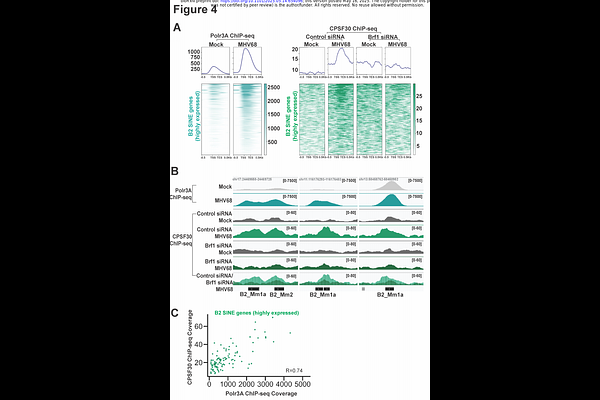RNA polymerase III transcription-associated polyadenylation promotes the accumulation of noncoding retrotransposons during infection

RNA polymerase III transcription-associated polyadenylation promotes the accumulation of noncoding retrotransposons during infection
Lari, A.; Shah, S. B.; Mao, X.; Sanghrajka, P.; Karijolich, J.; Lareau, L. F.; Glaunsinger, B. A.
AbstractThe accumulation of RNA Polymerase III (Pol III) transcribed short interspersed nuclear element (SINE) retrotransposon RNA is a hallmark of various cellular stressors, including DNA virus infection. However, the molecular mechanisms driving the induction of these normally repressed loci are largely undefined. Here, we reveal that in addition to Pol III transcriptional induction, gammaherpesvirus infection stimulates mRNA-like 3\' end processing of SINE RNAs that leads to their stabilization. We developed a convolutional neural network (CNN)-based model that identified a polyadenylation-associated motif as the key hallmark of infection-induced SINEs. Indeed, mRNA polyadenylation machinery is recruited in a Pol III-dependent manner to virus- induced loci, including B2 SINE and tRNA genes. Infection causes enhanced polyadenylation of SINE ncRNA, which is required for its stable accumulation. This virus-host interaction therefore highlights an inducible, coupled relationship between Pol III transcription and mRNA-like polyadenylation. It also reveals that co-option of the polyadenylation machinery by Pol III is a mechanism to increase the abundance of noncoding RNA during pathogenic stress.